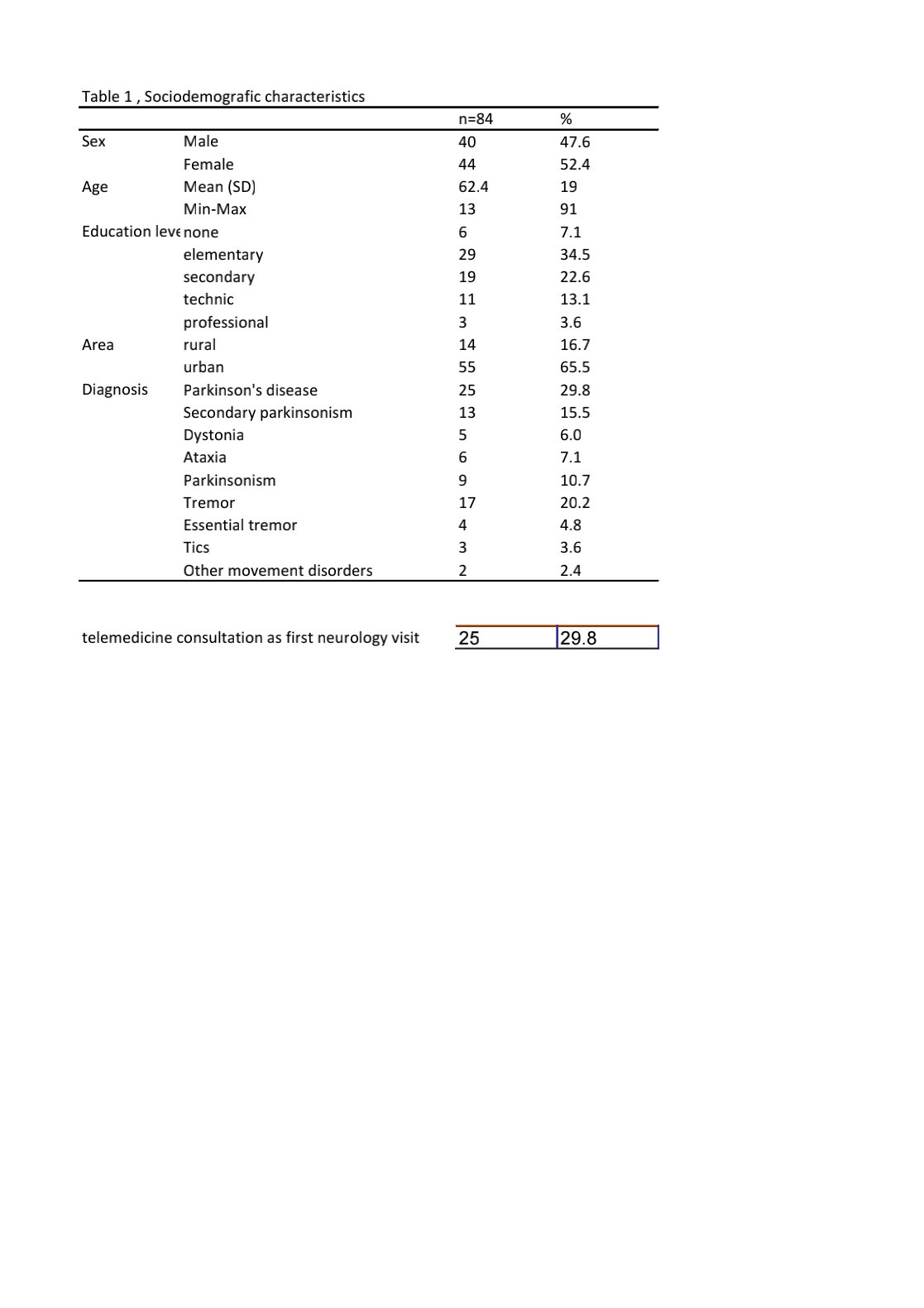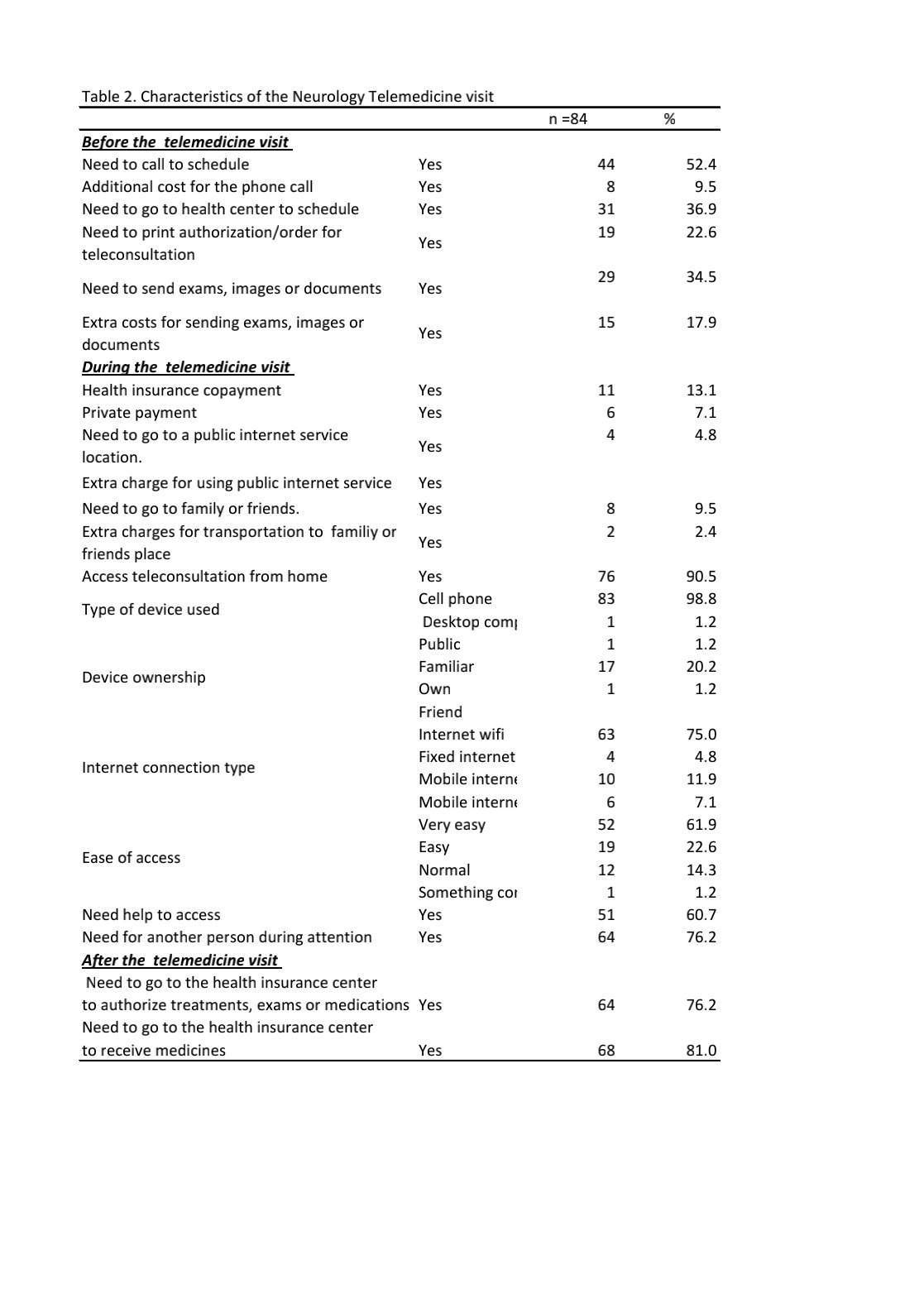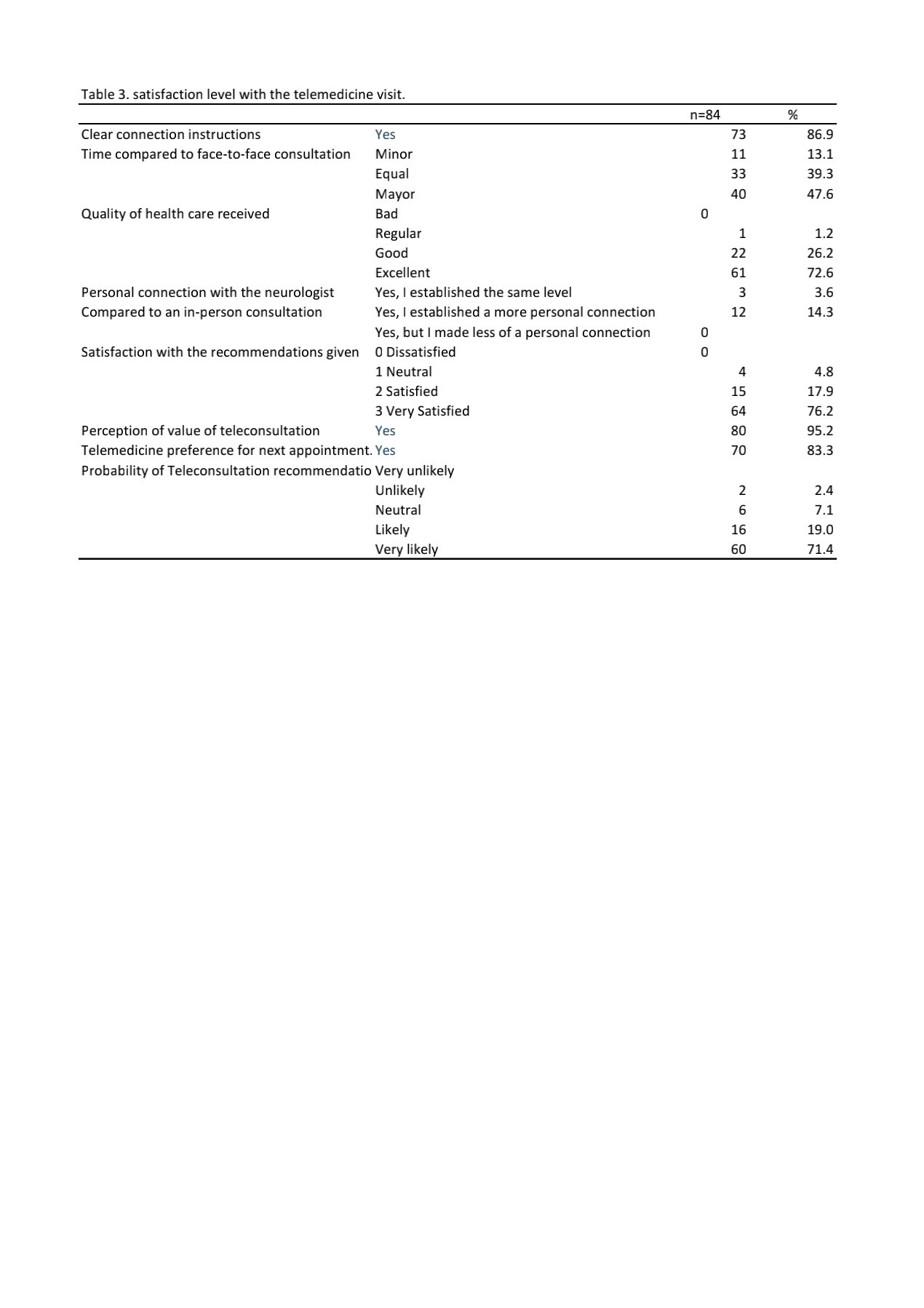Category: Other
Objective: Determine the level of satisfaction with the telemedicine consultation of patients with movement disorders on the Pacific coast of Valle del Cauca, in Colombia, during the covid-19 pandemic
Background: Neurological care of patients with movement disorders was a challenge during isolation due to the Covid 19 pandemic and telemedicine was a valuable strategy. In Colombia, the population of the Pacific Coast is mostly African American and a particularly vulnerable due to a history of isolation, underdevelopment and low socioeconomic levels and problems of violence. This study evaluates the level of satisfaction with the telemedicine consultation as a degree of quality of health care
Method: Patients diagnosed with movement disorders, over 18 years of age, were treated through telemedicine neurological consultation through WhatsApp video calls during 2020 to 2021. Subsequently, those who agreed to participate were contacted by telephone, using a structured interview and the Hanson satisfaction questionnaire to evaluate the level of satisfaction with the care received [3]. Descriptive statistics were analyzed using the SPSS statistical package (version 25; Chicago, IL-USA)
Results: 84 patients were included, for 29.8% this was their first neurological evaluation; 52.4% were women and with an average age of 62.4 years (SD 19.5), 56% had some diagnosis of parkinsonian syndrome. [Table 1].
36.9% needed to go in person to their health center to schedule the telemedicine visit, 90.5% connected from home, 98.8% used a mobile phone, 60.7% needed some help to access and 76.2% the company of another person. [Table 2]. Most patients considered adequate communication, respect for personal privacy, and feeling safe during the neurological examination.
98.8% considered the quality of the health care received good or excellent, 94% were satisfied with the recommendations given, and 90.5% would recommend the telemedicine visit to other patients. [Table 3].
Conclusion: Patients with movement disorders considered themselves satisfied with the telemedicine consultation, considered it safe, easy to attend to, and a valuable healthcare strategy, did not report significant extra expenses, and preferred this route for future consultations. We recommend reinforcing neurological care through telemedicine for patients with access barriers
Tabla 1
Tabla 2
Tabla 3
References: 1 Ryan E. Hanson, MD. Telemedicine vs Office Visits in a Movement Disorders
Clinic: Comparative Satisfaction of Physicians and Patients. Movement
disorders clinical practice 2019; 6(1): 65–69. doi: 10.1002/mdc3.12703
2 Ben-Pazi H, Browne P, Chan P, Cubo E, Guttman M, Hassan A, Hatcher-Martin J, Mari Z, Moukheiber E, Okubadejo NU, Shalash A; International Parkinson and Movement Disorder Society Telemedicine Task Force. The Promise of Telemedicine for Movement Disorders: an Interdisciplinary Approach. Curr Neurol Neurosci Rep. 2018 Apr 13;18(5):26. doi: 10.1007/s11910-018-0834-6. PMID: 29654523.
3. Mulroy E, Menozzi E, Lees AJ, Lynch T, Lang AE, Bhatia KP. Telemedicine in Movement Disorders: Leçons du COVID-19. Mov Disord. 2020 Nov;35(11):1893-1896. doi: 10.1002/mds.28297. Epub 2020 Sep 24. PMID: 32881108.
To cite this abstract in AMA style:
L. Ortega-Bolaños, D. Bolaños-Ortega, K. Ortega-Dorado, K. Martinez-Ortega. Satisfaction with telemedicine of patients with movement disorders on the Pacific coast of Colombia. [abstract]. Mov Disord. 2024; 39 (suppl 1). https://www.mdsabstracts.org/abstract/satisfaction-with-telemedicine-of-patients-with-movement-disorders-on-the-pacific-coast-of-colombia/. Accessed April 20, 2025.« Back to 2024 International Congress
MDS Abstracts - https://www.mdsabstracts.org/abstract/satisfaction-with-telemedicine-of-patients-with-movement-disorders-on-the-pacific-coast-of-colombia/



